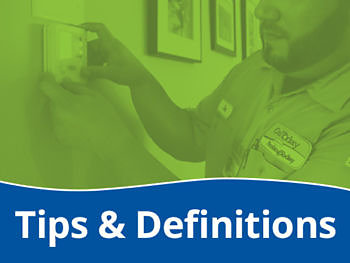3 Ways to Manage Holiday Energy Bills While Hosting Guests

October 26, 2017
We’ll share 3 easy energy-saving tips to keep your guests happy and your wallets full.
Hosting guests can really run up your monthly utility bill—unless you find ways to cut back on electricity use.
We’ll share 3 easy energy-saving tips to keep your guests happy and your wallets full:
- Turn down the water heater temperature
- Be aware of “on-peak” electricity prices
- Use a programmable thermostat
Let’s go into more detail about each of these tips...
#1: Turn down the water heater temperature
Adding more people to your household means a lot more hot water use—which means more work for your water heater (i.e. much higher energy bills).
The easiest way to fix that problem? Lower the temperature on your water heater. In fact, lowering the thermostat 10° on your water heater can reduce the amount of electricity it uses by 3% to 5%.
Why? Well lowering the temperature cuts down on the energy required for the tank to recover and keep the water in the tank hot.
So what’s the best energy-saving temperature for your water heater? No higher than 120°. If you’ve never adjusted your water heater thermostat, it’s likely set to 140°, so lowering the thermostat to 120° is likely to save you 6% to 10% on electricity used for water heating.
Follow this step-by-step tutorial on how to adjust the thermostat on gas or electric water heaters.
#2: Be aware of “on-peak” electricity prices
Your electricity provider has “on-peak” hours, meaning that in periods of high demand for electricity, the cost of electricity spikes.
From November 1st to March 31st, Florida Power & Light Company’s (FPL)“on-peak” hours are from:
- 6 am to 10 am
- 6 pm to 10 pm
So to save money, you’ll want to try cutting back your electricity usage during “on-peak” hours and save it for (“off-peak”) hours when possible—and encourage your guests to do the same.
Avoid running these energy-guzzling appliances during “on-peak” hours:
- Washing machine & clothes dryer
- Dishwasher
- Space heaters
- Electric oven
- Water heater
#3: Turn back thermostat 7–10 degrees
November weather in Tampa can be tricky: During the day, you want to run the AC. But at night, when the temperatures dip below 59°, you’re tempted to run the heat.
Here’s our money-saving suggestion: Save 10% on your yearly energy bills by simply turning your thermostat back 7°–10° for 8 hours every day and night.
Let’s look at how this works using Tampa’s average November weathers (highs of 81-76° and lows of 64-58°):
- During the day, keep your thermostat set to 81°+ while you’re away and 78° only while you’re at home and need cooling.
- At night, switch to heat but keep your thermostat set to a cool 62° (or lower). That means, your heating system will only come on when your home dips below that temperature.
Now, we know what you’re thinking: How can I possibly remember to adjust the thermostat that much?
Well, that’s where a programmable thermostat comes in handy. With a programmable thermostat, you can set a schedule to automatically switch temperatures (even from AC to heating) whenever you want.
Plus, many programmable thermostats (like the Nest Learning Thermostat) are WiFi controlled which means you can even control your thermostat while you’re away from home with your guests. That way, you can set the temperature to be exactly what you want before you get home.
Learn more about programmable thermostats by reading these related articles:
- The Benefits of Upgrading to a Programmable Thermostat
- 3 Simple Steps to Finding the Perfect Programmable Thermostat
Need a programmable thermostat?
We’d be happy to answer any questions you may have. Just give us a call.
We’ll send one of our trusted technicians to your home and give you a price estimate to install a programmable thermostat.
Posted in: Tips